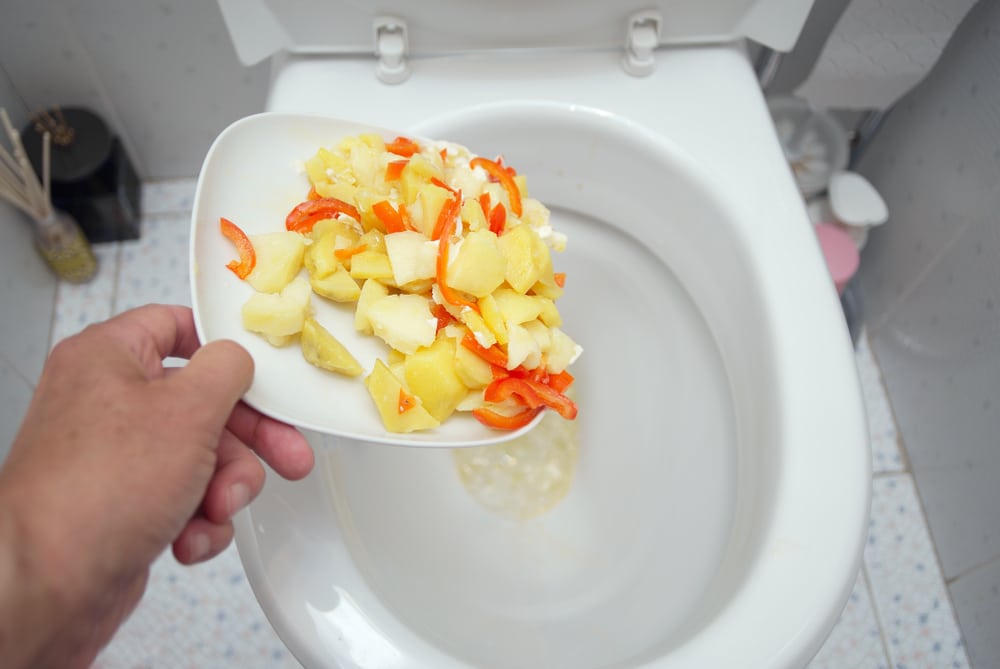Can You to Flush Food in the Toilet?
Can You to Flush Food in the Toilet?
Blog Article
Just how do you actually feel on the subject of Think Twice Before Flushing Food Down Your Toilet?

Intro
Many people are frequently confronted with the issue of what to do with food waste, specifically when it comes to leftovers or scraps. One common inquiry that arises is whether it's alright to purge food down the commode. In this post, we'll delve into the reasons individuals might take into consideration flushing food, the consequences of doing so, and different techniques for correct disposal.
Reasons why people may consider purging food
Absence of awareness
Some people might not understand the possible harm brought on by purging food down the bathroom. They may erroneously think that it's a harmless method.
Ease
Purging food down the toilet may appear like a fast and very easy option to taking care of unwanted scraps, specifically when there's no nearby trash can readily available.
Laziness
Sometimes, individuals might just select to flush food out of sheer laziness, without thinking about the effects of their actions.
Repercussions of flushing food down the bathroom
Ecological influence
Food waste that winds up in rivers can contribute to contamination and damage aquatic environments. Additionally, the water utilized to purge food can stress water resources.
Pipes problems
Flushing food can lead to clogged up pipelines and drains, triggering costly plumbing repairs and inconveniences.
Kinds of food that must not be flushed
Fibrous foods
Foods with coarse textures such as celery or corn husks can obtain entangled in pipes and cause obstructions.
Starchy foods
Starchy foods like pasta and rice can soak up water and swell, bring about obstructions in pipes.
Oils and fats
Greasy foods like bacon or food preparation oils must never be purged down the toilet as they can strengthen and create blockages.
Appropriate disposal approaches for food waste
Making use of a waste disposal unit
For homes equipped with waste disposal unit, food scraps can be ground up and purged with the pipes system. Nonetheless, not all foods appropriate for disposal in this way.
Recycling
Certain food packaging materials can be recycled, minimizing waste and minimizing environmental influence.
Composting
Composting is an eco-friendly method to deal with food waste. Organic products can be composted and utilized to improve soil for horticulture.
The importance of correct waste management
Decreasing environmental damage
Proper waste management practices, such as composting and recycling, help decrease pollution and maintain natural deposits for future generations.
Protecting pipes systems
By staying clear of the technique of flushing food down the commode, home owners can avoid pricey plumbing repair work and preserve the honesty of their plumbing systems.
Final thought
Finally, while it might be alluring to flush food down the commode for convenience, it is essential to recognize the possible effects of this action. By taking on proper waste administration methods and dealing with food waste properly, people can contribute to healthier plumbing systems and a cleaner environment for all.
FLUSH FOOD DOWN THE TOILET?
FLUSHING FOOD CAN CAUSE BLOCKED DRAINS IN YOUR HOME
All of the plumbing fixtures in your home are connected to the same sewer pipe outside of your home. This outdoor sewer pipe is responsible for transporting all the wastewater from your home to the Council sewer mains. Even small pieces of food that go down the kitchen sink can cause problems for your sewer. It should therefore be obvious that flushing larger bits of food, such as meat, risks a clog in either the toilet itself or the sewer pipes. Flushing greasy food is even more problematic because oil coagulates when it cools, coating the interior lining of your pipes.
THE TOILET IS NOT A BIN
Food isn’t the only thing that people shouldn’t be flushing down the toilet. People use the toilet to dispose of all kinds of things such as tampons, makeup wipes, dental floss, kitty litter and even underwear. Water goes to great lengths to educate residents about the high costs and stress placed on wastewater treatment systems simply from people flushing the wrong stuff down the toilet. It costs taxpayers millions of dollars each year, and homeowners thousands in blocked drain repairs.
FLUSHING FOOD IS A WASTE OF WATER
Flushing food is a waste of our most precious resource - water. In June this year Level 1 water restrictions were introduced to protect water supply from drought conditions. Much of New South Wales continues to be affected by prolonged drought with recent figures revealing up to 97 per cent of the state remains in drought. Depending on whether you have a single or dual flush toilet, every single flush uses between five and 11 litres of water. In the current climate this is a huge amount of water to be wasting on flushing food that should be placed in the bin (or better yet, the compost).
https://www.jabplumbingsolutions.com.au/blog/can-you-flush-food-down-the-toilet

As a keen reader about , I think sharing that piece of content was a good idea. Appreciated our entry? Please quickly share it. Help other people discover it. Thanks for being here. Please come visit our site back soon.
Call Today Report this page